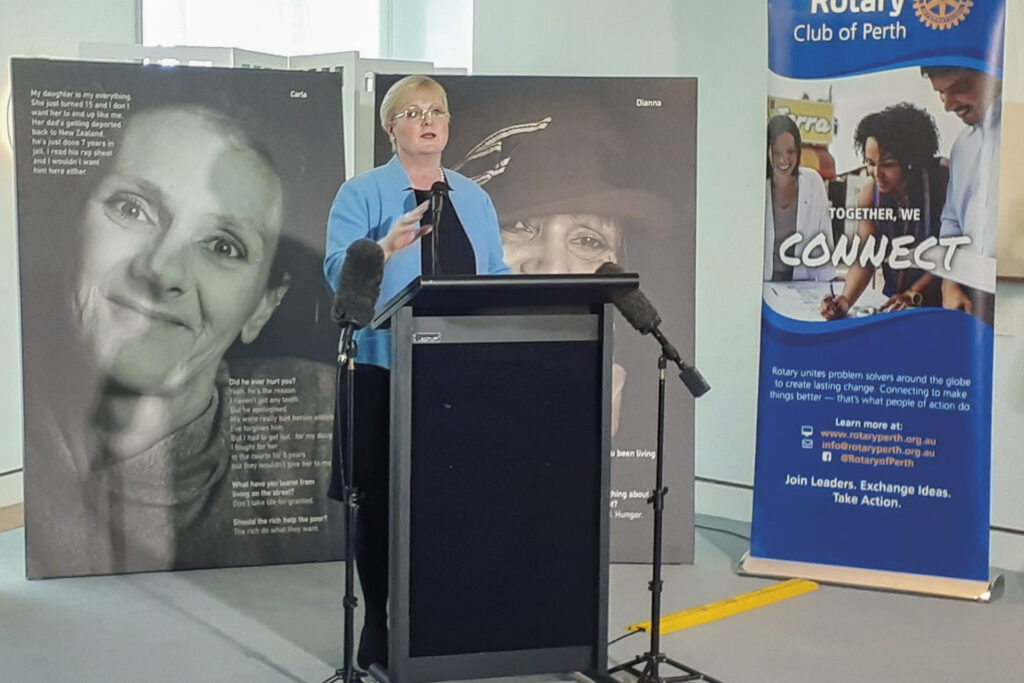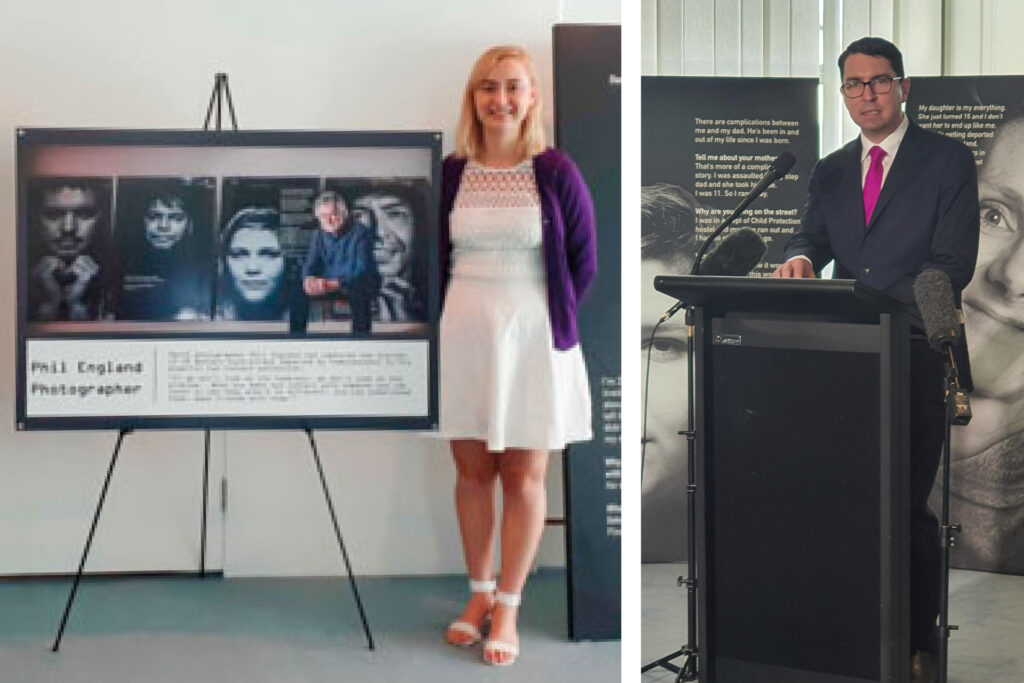When photographer Phil England created the photographic portraits of homeless people that featured in a humanitarian exhibition of hope, he stated, “Don’t walk past them, look into their eyes and you will see through the stigma. Everyone has a story, including a homeless person.”
On International Women’s Day this year, Rotary clubs from Western Australia invited federal politicians in Canberra to look directly into the eyes of homeless people – 49,000 of which are women experiencing the distress and fear of hiding on the streets every night. Forty-one per cent are escaping family violence.

Originally displayed in the West Australian Parliament, WA Senator Dean Smith sponsored a showing of the photographic exhibition in Canberra on Wednesday, March 8. The exhibition was opened by Senator Linda Reynolds CSC and Member for Perth Patrick Gorman, appropriately in the Dorothy Tangney Alcove. West Australian politician Dame Dorothy was the first woman elected to the Australian Senate.
Other speakers included CEO of the Australian Alliance to End Homelessness David Pearson, Perth Rotaractor Tara Sherwood, and Shadow Minister for Homelessness Michael Sukkar. There were TV cameras from all the major outlets. Approximately 50 people were in attendance, including more than 25 parliamentarians hearing the main messages of investing in social housing and focusing on the growing problem of older women’s homelessness.
“Homelessness is a blight on our prosperous and civilised society,” said Ken Mullin, Chair of the Perth-based Rotary Homeless Hub, which coordinates the homelessness projects undertaken by Rotary in WA. “We decided we needed a way of appealing to the community.”

The exhibition presents the reality of the sadness and therefore shame of an unknowing, perhaps uncaring society.
Older women are the fastest growing homeless group in Australia. Lack of superannuation and no savings, the continuing gender pay gap, an unaffordable rental market, age discrimination, and life events like the death of a spouse, divorce and serious illness are all contributing factors. Almost 16,000 children under 12 are currently homeless in the ‘lucky country’.
CEO of the Australian Alliance to End Homelessness David Pearson despaired that Australians are becoming increasingly desensitised to people living and dying on the streets. Approximately 420 of those people die annually.
“The exhibition raises awareness amongst parliamentarians that it doesn’t need to be this way,” David said. “Around the world there are growing numbers of communities ending homelessness. We should also seek to do so in Australia”.
